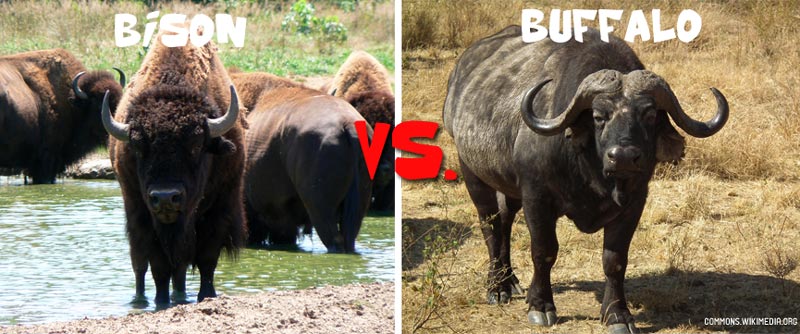 Big, hairy and unpredictable, the American Bison (bison) roamed in large quantities in North America when Columbus landed. Early settlers called them Buffalo, as they look similar to Buffalo found in parts of Europe and Africa. The name has simply stuck, but scientifically, it’s different but acceptable.
Big, hairy and unpredictable, the American Bison (bison) roamed in large quantities in North America when Columbus landed. Early settlers called them Buffalo, as they look similar to Buffalo found in parts of Europe and Africa. The name has simply stuck, but scientifically, it’s different but acceptable.
So what is the difference between buffalo and bison? Standing side by side, there are marked differences. The American Bison has the humped shoulders, short neck and enormous head that have come to symbolize the rugged American West. In contrast, the African Cape Buffalo and the Asian Water Buffalo are crowned with a thick set of horns ranging from 2-6 feet, tip to tip.
It is estimated that a whopping 60 million American Bison roamed the plains when Columbus landed. One of the largest wild animal groups in the world’s history, their stomping grounds stretched from Northern Canada to Mexico.
When wild, the American Bison is considered more dangerous than a grizzly bear, rated second only to the Alaskan brown bear as a threat. Weighing in at two thousand pounds with a top speed of thirty miles an hour, the massive head can be used as a battering ram while the back legs can kill or wound.
American Bison and their Buffalo cousins tend to share the same unpredictable temperament. The common sense advice “do not approach” is an understatement. They weigh ten times your weight and can run faster. You don’t want to meet either in a dark alley. Luckily, chances are: you won’t.
Fortunately for us, Bison makes a delicious and nutritious jerky. Bison jerky is high in protein and low in cholesterol and fat. We offer bison jerky in a variety of flavors, Original, Spicy, Teriyaki, Habañero and Gluten-Free. All our meat comes from bison that is raised without growth hormones or steroids.
Separate yourself from the herd and try Bison jerky today.
Leave a Reply